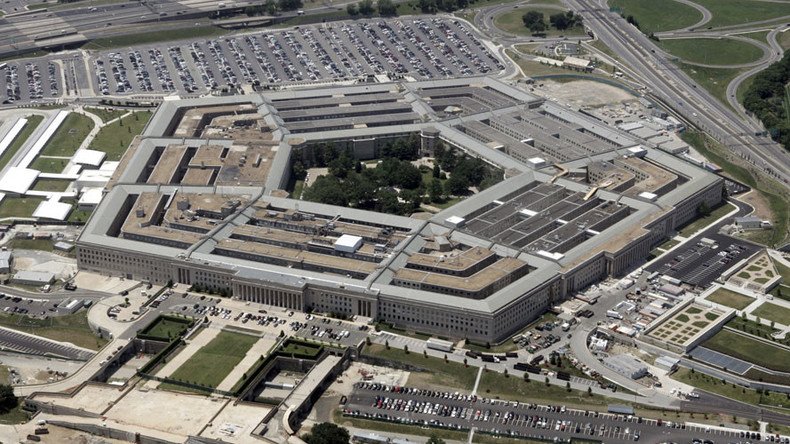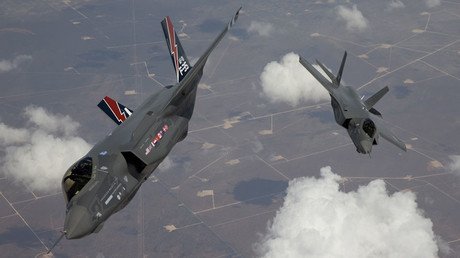Slush funds, secrets and splurges: How Pentagon budgets keep getting bigger

Despite unprecedented levels of funding, the US Department of Defense says it is not getting enough money. Figuring out how it is all being spent is next to impossible, as the Pentagon is the only government agency unable to pass an audit.
At $602 billion, military spending accounted for 16 percent of the federal budget last year, and 54 percent of the “discretionary spending” controlled by Congress every year, according to GovTrack. Depending on the final provisions, the 2017 National Defense Authorization Act (NDAA) will fund the Pentagon to the tune of anywhere between $602 and $610 billion.
With the 2017 NDAA, the Pentagon is on track to have a budget greater than the next seven countries in the world combined, and bigger than at the height of President Ronald Reagan’s Cold War arms race. Yet the Department of Defense continues to complain about being underfunded, citing the so-called “readiness gap” – lack of money for troop training and maintenance of legacy weapons – even as it buys new and expensive weapons systems.
The problem is how the money is being spent – and the Pentagon’s utter lack of accountability, according to William Hartung, director of the Arms and Security Project at the Center for International Policy. He suggests the DOD’s inability to pass an audit is a result of deliberate obfuscation.
“By keeping us in the dark about how it spends our money, the Pentagon has made it virtually impossible for anyone to hold it accountable for just about anything,” Hartung wrote last week, as the NDAA was approved in the House of Representatives and headed for the Senate.
The most obvious fudging, Hartung notes, is in the form of the Overseas Contingency Operations (OCO) fund, an extension of the base Pentagon budget earmarked specifically for US wars abroad. President Barack Obama actually vetoed the 2016 NDAA because the lawmakers allocated OCO funds to base budget items, in an effort to skirt restrictions imposed by the sequester. In this year’s draft of the NDAA approved by the House, $18 billion from the OCO is allocated to additional F-35 and F-18 aircraft that the DOD did not ask for.
This is good news for arms manufacturers Lockheed Martin and Boeing, but bad news for troops that will once again come up short for training and maintenance funds, writes Hartung, author of Prophets of War: Lockheed Martin and the Making of the Military-Industrial Complex.
Another example of budget shenanigans is the B-21, the yet-unnamed Long-Range Strike Bomber that is still in the design stages at Northrop Grumman. The US Air Force has argued that disclosing the price of the aircraft could reveal its range and payload capabilities. If that were true, Hartung notes, the F-35 would “have a range beyond compare, possibly to Mars and back.”
Battle of the military budget: Congress, White House clash over NDAAhttps://t.co/PhFUIECfsZpic.twitter.com/35yBDbDqyf
— RT America (@RT_America) May 18, 2016
The B-21 is just one part of a program to revamp the US nuclear arsenal over the next three decades, including ballistic missile submarines and new land-based missiles, that will cost at least $1 trillion – and that is before the usual cost-overruns, as Hartung notes. The US taxpayers will be in for sticker shock in the mid-2020s, when F-35 is expected to hit peak production.
Though plagued by a lengthy list of problems, the F-35 is one of those programs that the Pentagon can’t give up even if it wanted to, despite its projected $1.5 trillion cost. The plane’s production is spread out over 45 states, ensuring that the resulting jobs will have political support in Congress.
More to the point, the only other plane that could replace the aging F-15, F-16 and F-18 fleets is even more expensive – and no longer in production. Fewer than 200 F-22 Raptors were made before the program was canceled in 2011, and re-starting it will cost even more than plowing ahead with the F-35, according to Lockheed Martin.
The Navy is now lobbying for a dedicated submarine building fund, so it would not have to compete with the funding for surface ships. The Air Force also wants a slush fund to pay for the B-21 and the new long-range nuclear ballistic missile.
"Freedom is in our soles" - except when it comes to #NDAA. @JimDeMint writes on the @newbalance amendment. https://t.co/LXSwTmZ9Xa
— Heritage on the Hill (@HeritageOTH) May 17, 2016
Budget boondoggles aren’t just about planes, tanks and submarines, either. One provision in the 2017 NDAA mandates troops wear American-made sneakers; they were previously free to choose their own training footwear. Critics of the provision have pointed out this would effectively funnel the money to the Boston, Massachusetts-based New Balance and cost the taxpayers and extra $320 million.
The US actually spends up to $1 trillion a year on “national security” matters, including homeland security, veterans’ affairs and Department of Energy nuclear warhead programs, according to the analysis by the Project on Government Oversight. The problem is not the lack of money, but how it is being spent, Hartung argues.
“The Pentagon has so many budding programs tucked away in so many different lines of its budget that even its officials have a hard time keeping track of what’s actually going on,” Hartung wrote. “As for the rest of us, we’re essentially in the dark.”













